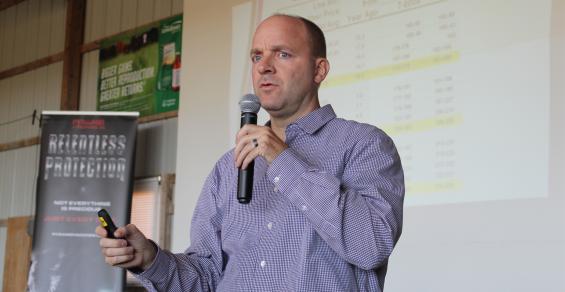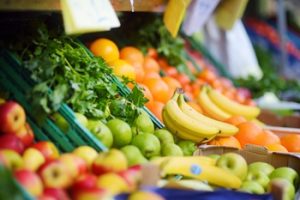Ag economist Glynn Tonsor shares outlook at 2022 Kansas State University Beef Stocker Field Day.
If you take away just three things from Glynn Tonsor’s Beef Outlook, let them be these: Beef demand has been solid; supply dynamics likely support higher cattle prices; and we have to think global and yet manage at a local level.
Tonsor, a Kansas State University professor of agricultural economics, spoke Sept. 29 at the 2022 KSU Beef Stocker Field Day in Manhattan, Kan.
Beef demand
On both the domestic and export fronts, beef demand been solid, Tonsor said. But he cautioned cattle producers to not take that for granted.
“I was 100% wrong early in the pandemic — most of you heard me say this — I was concerned that with the pull-down on economic activity, and uncertainty, and so forth, that consumers would tighten their wallets and wouldn’t spend what we normally would on beef,” he said. But he says he was wrong, and that’s good for cattle producers, because he didn’t foresee the federal stimulus having as big an impact as it did.
“Regardless, we cannot take it for granted,” he added. “There’s plenty of macroeconomic headwinds in front of us that present risk for beef demand, both domestically and abroad.” Inflation could cause consumers to tighten their belts in their household budgets to meet rising mortgage costs, credit card bills and more. Prices at the meat counter will be important to budget-conscious shoppers. However, with anticipated increases in business travel, restaurant demand for beef may help producers out.
Supply dynamics
In simple terms, drought has pulled down the domestic cattle herd more than we thought, Tonsor said. That, in turn, leads to less beef being produced in the next two to four years, and that by itself is supportive of cattle prices.
“The latest projection [for 2023] is we’re going to slaughter 4.7% fewer animals than we did in 2022,” Tonsor said. “Part of that is presuming feed costs come down to enable that.” In 2024, projections are 6% to 7% less slaughter than there will be in 2023, year-over-year numbers.
So, with fewer hooves going through the system in the future — even if there are higher dressed weights assuming cheaper feedstocks — if demand remains the same, the price of cattle should rise, Tonsor said.
“Please note, though, that itself doesn’t guarantee a positive margin,” Tonsor cautioned. If there was ever a time to be more focused on trimming your costs to run your business, now would be it. Focusing on your net margins will be key going forward.
Think global, manage local
There’s a lot that cattle producers can focus on in their own businesses, like herd efficiency and controlling your costs. But there’s also a lot that they can’t influence, and Tonsor reminded cattle producers that they can’t just avoid those global issues.
“Be aware of global issues — the bigger issues outside of your ranch,” he said. “A simple example is, nobody in this room can influence inflation. But you need to be aware of what inflation is, right, because you need to understand how it impacts you.”
It costs more and more to run a herd and raise a calf crop every year, Tonsor said. In 2021, the estimated cash cost to run a cow was $852 per head. A year later, Tonsor said that cash cost has risen to $950 per head. Consider your breakeven costs have risen, on average, $100 per head in just a year. And the projected cost per cow in 2023 is $1,000, and in 2024, it’s expected to be $1,025 per cow.
It’s not just about how much you can sell your calf crop for, Tonsor emphasized, it’s your cost structure and your breakeven price you need to keep in mind.
Watch Tonsor’s full presentation later or below.





